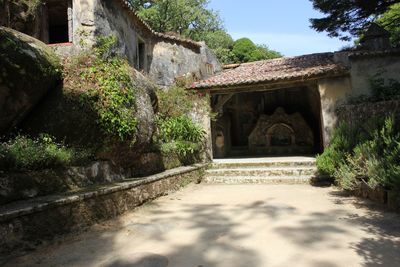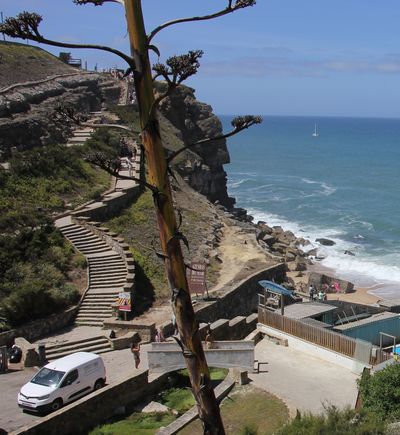CONVENTO DOS CAPUCHOS, AZENHAS DO MAR, CABO DA ROCA, COLARES
Travelling out of the Estoril Coast you will find some lovely historic and picturesque places. The Convento dos Capuchos, Azenhas do Mar and Cabo da Roca are just a few of the places of interest.
CONVENTO DOS CAPUCHOS, SINTRA

In 1560 Dom Alvaro de Castro, built the Convento dos Capuchos on behalf of his father Dom João de Castro. The Convent had other names: Convento de Santo Cruz da Serra da Sintra and Convento da Cortiça. William Beckford mentions the Cork Convent in his travel journal.
The whole complex was an austere hermitage with the barest of conditions. The devout friars believed in living with the minimum comfort, spiritually embracing God’s creation of nature.
The cells or rooms were built among the granite boulders. The walls were insulated with cork taken from the local trees. This was to keep out humidity. They made use of local natural materials. The friars grew medicinal plants and lived off the land. The friars lived here until 1834 when religious orders in Portugal were disbanded. In 1873 it became the property of the Cook family. The Portuguese state acquired it in 1949. UNESCO classified the Sintra Hills including where the convent is located as a Cultural Landscape – Heritage for Humanity in 1995.
AZENHAS DO MAR

Enjoying the Summer 2023
hot weather with a dip in the pool and sea and drink and meal at Azenhas do Mar.
Azenhas do Mar is a long drive from Cascais but it has a pretty village overlooking the sea with a natural rock pool and great views from here.

Azenhas do Mar
The steps that lead from the main road to the beach at Azenhas do Mar, opposite the rock pool
CABO DA ROCA
Cabo da Roca is the most westerly point of Europe. Luis Camoes was Portugal’s famous poet and writer. He referred to it in his Lusiadas as the point “where the land ends and the sea begins.” It is part of the Sintra Cascais Natural Park and is 150 metres above sea level.
Built in 1758 the lighthouse played an important role in the defence of the coast. The views of this coastline and Sintra hills are spectacular.
COLARES

Colares is located nearer to Sintra. It is well-known for its winery the Adega Regional de Colares that produces the famous Chitas wine. Colares has some beautiful rugged landscapes and terrain with narrow winding roads. There are a number of small villages nearby.
Pat Rodrigues
